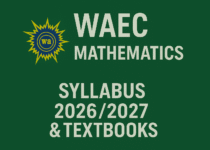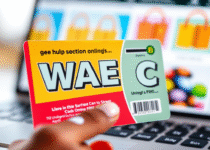WAEC Auto Electrical Work Syllabus 2026/2027 & Textbooks
The WAEC Auto Electrical Work Syllabus 2026/2027 & Textbooks – covers six core topics: Battery, Starting System, Ignition System, Charging System, Lighting System, and Auxiliary System. Candidates will be assessed on their knowledge, skills, and attitudes in maintaining and repairing auto electrical systems, utilizing safety practices and diagnostic tools like multimeters and test lamps.
Aims & Objectives
- Students Must understand the concepts in auto electrical works
- Students must use tools and equipment to carry out maintenance and repair on motor vehicles
- Students must understand the safety practices and observe them in the work environment .
There will be three papers, Papers 1, 2 and 3, all of which are to be taken. Papers 1 and 2 shall be composite papers to be taken in one sitting.
PAPER 1
will consist of forty multiple-choice objective questions, all of which are to be answered in 45 minutes for 40 marks.
PAPER 2
will consist of six short-structured questions. Candidates will be required to answer any four in 1 hour for 60 marks.
PAPER 3
This will be a practical test of 2 hours duration. It will consist of three skill-based questions, out of which candidates will answer two for 90 marks.
WAEC Auto Electrical Work Syllabus 2026/2027-PDF DOWNLOAD
| Major Topics | Sub-Topics and Concepts |
| I. Power Source (Battery) | Concept of Battery: Understanding the basic function and working principle. |
| Practical Aspects: Uses of battery. | |
| Types and Structure: Types, constructional details, and ratings of batteries. | |
| Maintenance and Testing: Charging procedures. Testing and Maintenance techniques (including use of hydrometer, high-rate discharge tester). | |
| II. Engine Starting System | Fundamentals: Purpose and components of the starting system. |
| Circuitry: Circuit diagram of the starting system. | |
| Components: Types of starter motor. | |
| Repair and Service: Repair of starter motors. | |
| III. Ignition System | Fundamentals: Purpose and components of the ignition system. |
| Circuitry: Circuit diagram of the ignition system. | |
| Components: Construction and operation of the ignition coil. | |
| Types and Timing: Types of Ignition System. Timing procedures. | |
| Faults and Repairs: Identifying faults and performing repairs. | |
| IV. Charging System | Fundamentals: Purpose and components of the charging system. |
| Components: Alternator (structure and operation). | |
| Circuitry: Circuit diagram of the charging system. | |
| Faults and Repairs: Identifying faults and performing repairs. | |
| V. Lighting System | Fundamentals: Purpose and classification of lighting in a motor vehicle. |
| Components: Headlamps (structure and function). | |
| Circuitry: Circuit diagram of the lighting system. | |
| Maintenance: Maintenance and repairs of the lighting system. | |
| VI. Auxiliary System | Concept and Components: Concept and Components of an auxiliary system (general overview). |
| Details and Operation: Constructional details and operation of auxiliary system components. | |
| Maintenance: Maintenance and repairs of auxiliary components. | |
| VII. Required Facilities and Equipment | Equipment (Major): Motor Batteries, Battery charger, Testing lamp, Jumper cable. |
| Testing/Measuring Tools: Ammeter, voltmeter, multimeter, High-rate discharge tester, Hydrometer, Feeler gauge, Tester (Screwdriver type). | |
| Hand Tools/Specialized: A complete toolbox, Spanners, Battery head moulder set, Hand drilling machine, Vice, Wire brush, Bearing extractor, Pulley extractor, Soldering iron and lead, Cable stripper. | |
| Consumables/Safety: Polythene hand gloves set, Emery cloth, Wooden file, Aprons, Insulation tape. | |
| Workspace/Miscellaneous: Bench/Table, Magnetic pick-up, Google, Plastic trays. |


